Fibonacci Sequence
The Fibonacci sequence is a series of numbers in which each number is the sum of the two preceding ones, usually starting with 0 and 1. The sequence goes: 0, 1, 1, 2, 3, 5, 8, 13, 21, and so on. The sequence was first described in the year 1202 by Italian mathematician Fibonacci in his book Liber Abaci.
Formula
The formula to find the nth term of the Fibonacci sequence is:
Fn = Fn-1 + Fn-2
Where Fn is the nth term, Fn-1 is the (n-1)th term, and Fn-2 is the (n-2)th term.
Properties of the Fibonacci Sequence
- The sequence starts with 0 and 1.
- Each subsequent number in the sequence is the sum of the previous two.
- The ratio of two consecutive Fibonacci numbers approaches the golden ratio, approximately 1.618, as the sequence progresses.
- The Fibonacci sequence has connections to various natural phenomena, such as the arrangement of leaves on a stem, the breeding patterns of rabbits, and the shape of galaxies.
Study Guide
To understand the Fibonacci sequence, follow these steps:
- Memorize the first few terms of the sequence: 0, 1, 1, 2, 3, 5, 8, 13, 21, 34, ...
- Understand the formula Fn = Fn-1 + Fn-2 and how it generates the sequence.
- Practice finding the nth term of the sequence using the formula.
- Explore the connection between the Fibonacci sequence and the golden ratio.
- Research real-world examples of the Fibonacci sequence in nature and art.
By following this study guide, you will gain a solid understanding of the Fibonacci sequence and its applications.
.◂Math Worksheets and Study Guides Fourth Grade. Problem Solving
Study Guide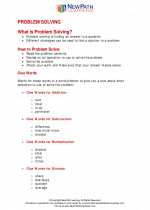 Problem Solving
Problem Solving  Activity Lesson
Activity Lesson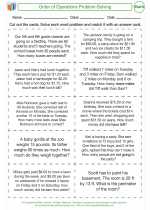 Order of Operations Problem
Order of Operations Problem  Activity Lesson
Activity Lesson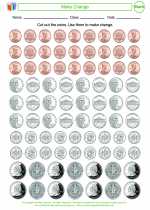 Make Change
Make Change  Activity Lesson
Activity Lesson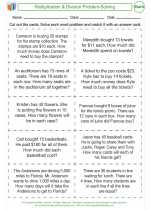 Multiplication & Division Problem
Multiplication & Division Problem  Activity Lesson
Activity Lesson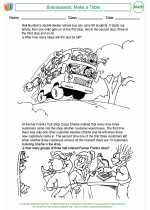 Brainteasers: Make a Table
Brainteasers: Make a Table  Activity Lesson
Activity Lesson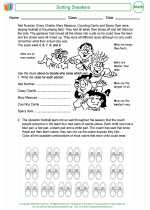 Sorting Sneakers
Sorting Sneakers  Activity Lesson
Activity Lesson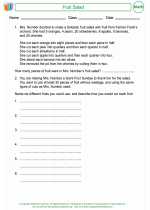 Fruit Salad
Fruit Salad  Activity Lesson
Activity Lesson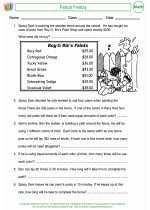 Fence Frenzy
Fence Frenzy  Activity Lesson
Activity Lesson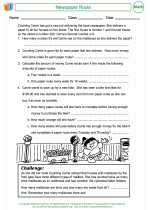 Newspaper Route
Newspaper Route  Activity Lesson
Activity Lesson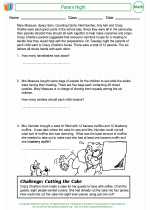 Parent Night
Parent Night  Activity Lesson
Activity Lesson Brainteasers: Guess & Check
Brainteasers: Guess & Check  Worksheet/Answer key
Worksheet/Answer key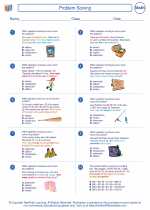 Problem Solving
Problem Solving  Worksheet/Answer key
Worksheet/Answer key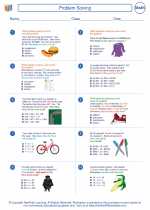 Problem Solving
Problem Solving  Worksheet/Answer key
Worksheet/Answer key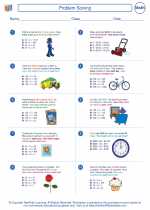 Problem Solving
Problem Solving  Worksheet/Answer key
Worksheet/Answer key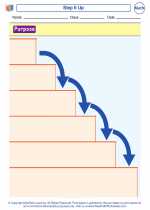 Step It Up
Step It Up 

 Activity Lesson
Activity Lesson
 Activity Lesson
Activity Lesson
 Activity Lesson
Activity Lesson
 Activity Lesson
Activity Lesson
 Activity Lesson
Activity Lesson
 Activity Lesson
Activity Lesson
 Activity Lesson
Activity Lesson
 Activity Lesson
Activity Lesson
 Activity Lesson
Activity Lesson
 Activity Lesson
Activity Lesson
 Worksheet/Answer key
Worksheet/Answer key
 Worksheet/Answer key
Worksheet/Answer key
 Worksheet/Answer key
Worksheet/Answer key
 Worksheet/Answer key
Worksheet/Answer key

The resources above cover the following skills:
Operations and Algebraic Thinking
Use the four operations with whole numbers to solve problems.
Multiply or divide to solve word problems involving multiplicative comparison, e.g., by using drawings and equations with a symbol for the unknown number to represent the problem, distinguishing multiplicative comparison from additive comparison. (See Appendix A, Table 2.) [4-OA2]
Solve multistep word problems posed with whole numbers and having whole-number answers using the four operations, including problems in which remainders must be interpreted. Represent these problems using equations with a letter standing for the unknown quantity. Assess the reasonableness of answers using mental computation and estimation strategies including rounding. [4-OA3]